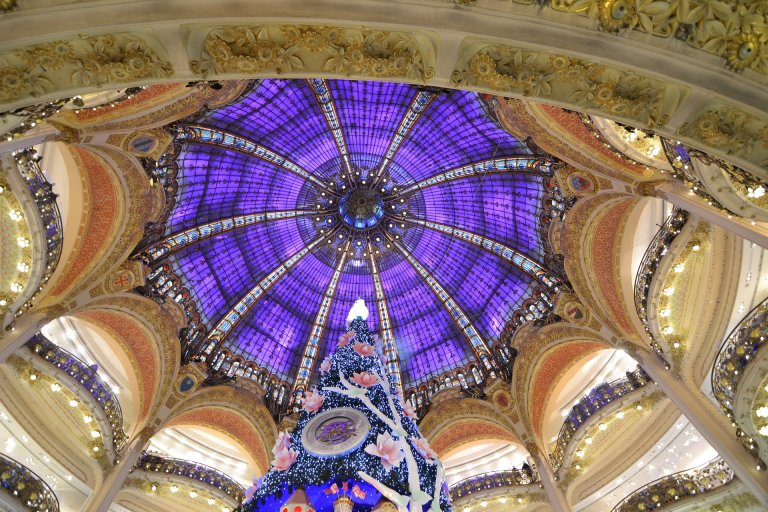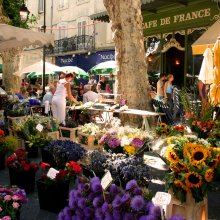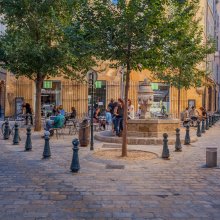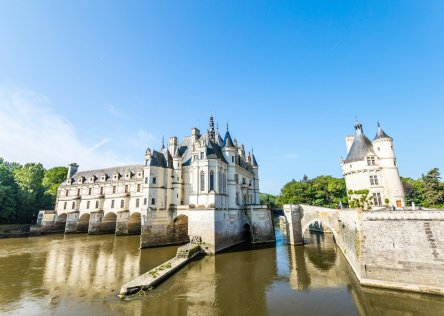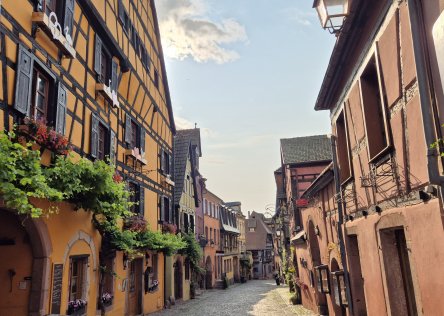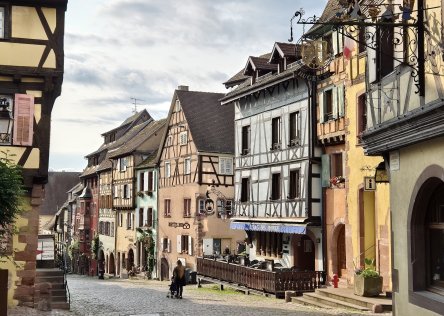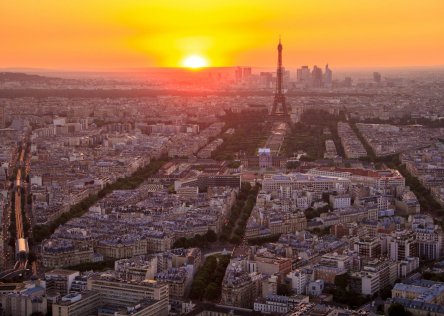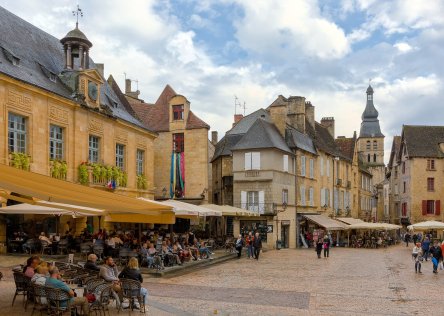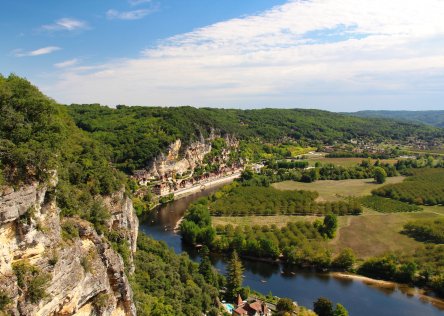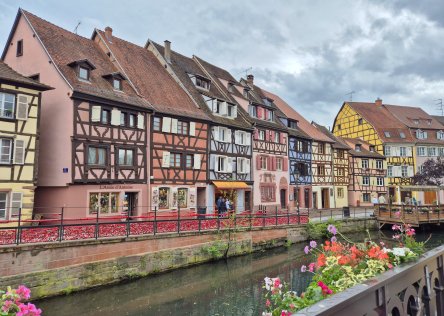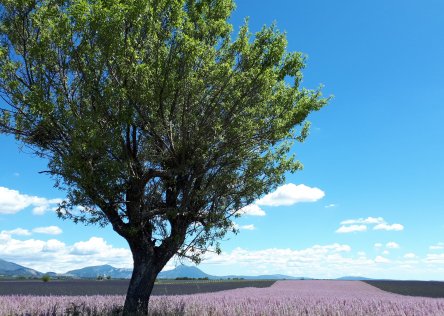When you think of Christmas in France, you might imagine Paris lit up with sparkling lights or children waiting eagerly for Père Noël (Santa Claus). While that’s true, there’s so much more to discover!
Each region has its own traditions, some charming, others a little quirky. If you book a self-drive tour of France around Christmas time, we will make recommendations on how to immerse yourself in the Christmas traditions in whichever region you're in!
Here are some fun facts about Christmas in France that may surprise you:
1. Two Santas in Eastern France
In Alsace and Lorraine (as well as in parts of southern Belgium and French-speaking Switzerland), children don’t just wait for Père Noël. They also know Saint Nicolas, who arrives on December 6th with gifts and sweets.
But beware! His dark companion, known as Père Fouettard (“Father Whipper”) or Hans Trapp in some parts of Alsace, was once said to punish naughty children.
Over time, these two figures merged into one legendary character who served as a spooky reminder to behave before Christmas!
2. The 13 Desserts of Provence
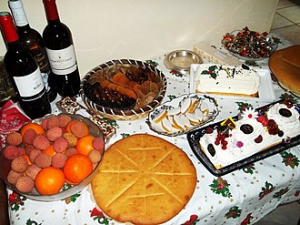
In Provence, Christmas dinner ends on a very sweet note: thirteen different desserts are served to represent Jesus and his twelve apostles. Don’t worry - these aren’t thirteen huge cakes! Instead, expect dried fruits, nuts, nougat, and little local specialties. A classic spread includes:
- Figs, almonds, and raisins
- White and black nougat
- Calissons (a delicious almond and candied fruit candy from Aix-en-Provence)
Travelers are often amused at how proudly people from Provence defend this tradition - it’s taken very seriously!
3. Réveillon: A Feast that Lasts Until Dawn
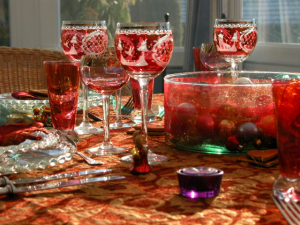
Christmas Eve in France is often celebrated with the Réveillon, a lavish dinner enjoyed after midnight mass. Depending on the region, you may find:
- Foie gras and smoked salmon to start
- Roast capon, goose, or turkey with chestnut stuffing as the main course
- Platters of fresh oysters (a Christmas essential in many households)
- And, of course, the bûche de Noël for dessert
The name comes from réveiller (to wake up), because families sometimes stay at the table until the early hours of the morning.
4. Shoes by the Fireplace
Instead of stockings, French children traditionally leave their shoes by the fireplace for Père Noël to fill with gifts. This custom dates back centuries, when children would leave their wooden clogs out. Today, most households use slippers, but the idea is the same.
5. A Nativity Scene Full of Locals
Provence takes the traditional Nativity scene one step further with santons, or “little saints.” These hand-painted clay figurines include not only Mary, Joseph, and baby Jesus, but also bakers, shepherds, farmers, and fishermen from the local village. It’s a way of bringing the community into the Christmas story, and many families collect santons over generations. Below, you can see our Senior Trip Planner Laura’s home nativity scene.
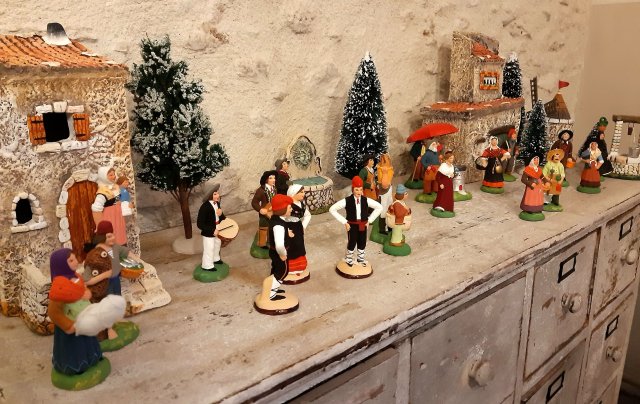
6. Regional Christmas Cookies & Treats
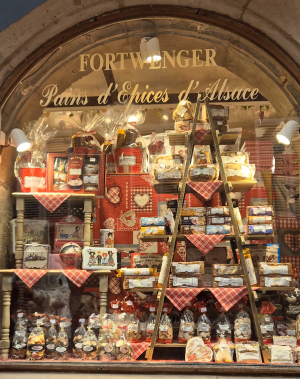
Each region of France has its own special Christmas cookies and sweets that reflect local ingredients and traditions:
- Bredele in Alsace: tiny spiced cookies made in dozens of varieties, often baked in big batches to share with family and friends.
- Croquants in Provence: crisp almond biscuits, perfect with a coffee after Christmas dinner.
- Sablés de Noël in Normandy: buttery shortbread cookies that melt in your mouth.
- Pain d’épices throughout France: spiced gingerbread sweetened with honey, a comforting holiday classic.
7. Log Cakes Instead of Logs on the Fire
The traditional French Christmas dessert is the bûche de Noël, a sponge cake rolled with cream and decorated to look like a wooden log. This replaces the real Yule log, which used to be burned in French homes for good luck. Today, the edible version is much more delicious!
Why not try our bûche de Noël recipe?
8. January 6: Another Excuse for Cake
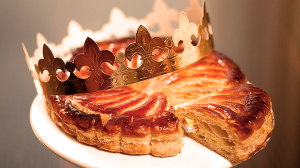
Christmas in France doesn’t end on December 25th. On Epiphany (January 6th), families share a special cake called galette des rois (King’s Cake).
Hidden inside is a little figurine (the fève). Whoever finds it in their slice becomes king or queen for the day and gets to wear a golden paper crown.
Planning a Christmas Trip to France?
If these fun facts about Christmas in France have inspired you, we invite you to experience France firsthand!
From Christmas markets in Alsace to cozy dinners in Provence, a holiday road trip through France is filled with magic and traditions you won’t find anywhere else. And of course, we can also plan a trip for you at any other time of the year (our favorite months are May, June and September!).
Our Self-Guided Tours of France
At France Just For You, we design tailor-made self-drive itineraries that let you discover France at your own pace, while staying in charming B&Bs and enjoying authentic local traditions.
Tap on the video below to find out more about kind of tour we could plan for you!
Is Christmas a good time to visit France?
Christmas can be a magical time to visit France, especially in Paris, Alsace, and Provence, where towns sparkle with festive lights and French Christmas markets fill the air with music and the scent of mulled wine. It’s a lovely time to soak up the atmosphere, visit museums, and enjoy cozy meals in traditional restaurants.
That said, daylight hours are short, and the weather can be cold and unpredictable, particularly in northern and central France. If your dream trip involves hiking, cycling, or spending lots of time outdoors, you may prefer another season.
For those who love the romance of winter and festive traditions, however, Christmas in France is unforgettable. Just remember: if you’re planning to visit Alsace’s Christmas markets, the best accommodations book out up to a year in advance.
Does France have Christmas markets?
Yes! France has hundreds of Christmas markets, from the grand displays in Paris, Lyon, and Strasbourg, to the charming local markets in smaller towns across Alsace and Provence.
You’ll find everything from handcrafted ornaments and local food specialties to beautiful gifts made by regional artisans.
In larger cities, some markets include imported goods, but we think you’ll find the most authentic souvenirs and festive charm in the smaller towns and villages of Alsace and Provence.
Where are the best Christmas markets in France?
The Alsace region is world-famous for its Christmas markets, with Strasbourg often called “the Capital of Christmas.” The towns of Colmar, Riquewihr, and Eguisheim look like scenes from a fairy tale as their half-timbered houses glow with twinkling lights.
In Provence, Christmas markets are also well-known, especially in Aix-en-Provence, Avignon, and Arles, where you’ll find traditional santons (hand-painted Nativity figurines) and plenty of festive Provençal treats.
If you’re visiting Paris in December, there are usually beautiful markets in places like La Défense and the Tuileries Garden, alongside stunning light displays and department store window decorations.
Are the Alsace Christmas markets worth visiting?
Absolutely. The towns and villages of Alsace transform into a winter wonderland at Christmas, with cobbled streets lined with lights, Christmas trees in every square, and the irresistible scent of gingerbread and mulled wine in the air. Visitors can browse traditional stalls, enjoy local dishes like flammekueche (Alsatian flatbread), and soak up the fairy-tale atmosphere.
Just be aware that it’s also the busiest time of year in the region. The Christmas markets in Alsace attract visitors from all over Europe, so if you’d like to stay in one of the most charming B&Bs or boutique hotels, it’s wise to book at least a year in advance.
How does France celebrate Christmas?
Christmas in France is all about family, food, and tradition. The season begins on December 6th in some regions with the celebration of Saint Nicolas, and continues through Epiphany on January 6th.
Families typically gather on Christmas Eve for the Réveillon, a long, indulgent dinner that might include foie gras, oysters, roast poultry with chestnuts, and a bûche de Noël for dessert. Many people attend midnight mass, and children wake the next morning to find that Père Noël has filled their shoes with gifts.
In the south, especially in Provence, you’ll see homes decorated with santons (miniature clay figures) and tables laid with the 13 traditional desserts that symbolize Jesus and his apostles.
What do French people eat at Christmas?
Food is at the heart of French Christmas traditions, and the menu often varies by region. However, some dishes are beloved throughout the country:
- Foie gras and smoked salmon to start the meal
- Oysters and seafood platters, especially along the coast
- Roast capon, goose, or turkey with chestnut stuffing
- Cheese platters with crusty bread
- And the famous bûche de Noël, a rolled sponge cake decorated like a Yule log
In Provence, many families add the 13 desserts, while in Alsace, sweet Bredele cookies and spiced gingerbread (pain d’épices) are Christmas staples.
